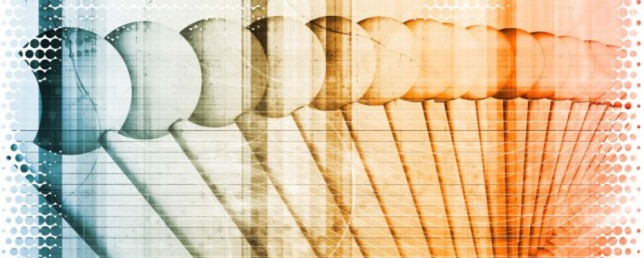Overview
The Applied Science and Technology Graduate Group is administered by the College of Engineering. The program is focused on interdisciplinary research, and draws faculty from the departments within the College of Engineering as well as from the Departments of Physics, Chemistry, Chemical and Biomolecular Engineering, Statistics, and Mathematics. Recent topics of interest include the properties and applications of nanostructures, thin-film and interface science, microelectromechanical systems (MEMS), short-wavelength coherent radiation, X-ray micro-imaging for the life and physical sciences, plasma physics and plasma-assisted materials processing, laser-induced chemical processes, laser probing of complex reacting systems, ultrafast phenomena, particle accelerators, nonlinear dynamics, chaotic systems, numerical methods, and topics in computational fluid mechanics and reacting flows. The Applied Science and Technology (AS&T) program awards the Doctor of Philosophy degree.
A hallmark of the AS&T Graduate Group is that the students design their graduate curriculum in consultation with their adviser to best match their research interests. This enables the students to cross the boundaries between traditional disciplines to conduct truly interdisciplinary research. Graduate research in the AS&T Program benefits from state-of-the-art experimental and computational facilities on the Berkeley campus and at the Lawrence Berkeley National Laboratory. The interdisciplinary, collaborative nature of the AS&T Program provides ample opportunity to develop new research directions by making the best use possible of these facilities and of the other research instrumentation available to AS&T faculty.
Students admitted to AS&T have an opportunity to choose a research adviser from a diverse group of world-renowned faculty members engaged in cutting-edge research at UC Berkeley. Among more than 80 associated members of the AS&T faculty, students will find internationally-recognized faculty members who have achieved great distinction in their scholarship. All have published in top-tier archival journals. Most have been recognized by their peers through prestigious awards. Many are members of one or more of the national academies (the National Academy of Sciences, the National Academy of Engineering, and the American Academy of Arts and Sciences).
Undergraduate Programs
There is no undergraduate program in Applied Science and Technology.
Graduate Program
Courses
Applied Science and Technology
AST C210 X-rays and Extreme Ultraviolet Radiation 3 Units
Terms offered: Fall 2017, Fall 2016, Spring 2009
This course explores modern developments in the physics and applications of x-rays and extreme ultraviolet (EUV) radiation. It begins with a review of electromagnetic radiation at short wavelengths including dipole radiation, scattering and refractive index, using a semi-classical atomic model. Subject matter includes the generation of x-rays with synchrotron radiation, high harmonic generation, x-ray free electron lasers, laser-plasma sources. Spatial and temporal coherence concepts are explained. Optics appropriate for this spectral region are described. Applications include nanoscale and astrophysical imaging, femtosecond and attosecond probing of electron dynamics in molecules and solids, EUV lithography, and materials characteristics.
Rules & Requirements
Prerequisites: Physics 110, 137, and Mathematics 53, 54 or equivalent
Additional Details
Subject/Course Level: Applied Science and Technology/Graduate
Grading: Letter grade.
Instructor: Attwood
Also listed as: EL ENG C213
AST C225 Thin-Film Science and Technology 3 Units
Terms offered: Spring 2017, Spring 2016, Spring 2015
Thin-film nucleation and growth, microstructural evolution and reactions. Comparison of thin-film deposition techniques. Characterization techniques. Processing of thin films by ion implantation and rapid annealing. Processing-microstructure-property-performance relationships in the context of applications in information storage, ICs, micro-electromechanical systems and optoelectronics.
Rules & Requirements
Prerequisites: Graduate standing in engineering, physics, chemistry, or chemical engineering
Hours & Format
Fall and/or spring: 15 weeks - 3 hours of lecture per week
Additional Details
Subject/Course Level: Applied Science and Technology/Graduate
Grading: Letter grade.
Instructors: Wu, Dubon
Also listed as: MAT SCI C225
AST C239 Partially Ionized Plasmas 3 Units
Terms offered: Spring 2010, Spring 2009, Spring 2007
Introduction to partially ionized, chemically reactive plasmas, including collisional processes, diffusion, sources, sheaths, boundaries, and diagnostics. DC, RF, and microwave discharges. Applications to plasma-assisted materials processing and to plasma wall interactions.
Rules & Requirements
Prerequisites: An upper division course in electromagnetics or fluid dynamics
Hours & Format
Fall and/or spring: 15 weeks - 3 hours of lecture per week
Additional Details
Subject/Course Level: Applied Science and Technology/Graduate
Grading: Letter grade.
Formerly known as: 239
Also listed as: EL ENG C239
AST C295R Applied Spectroscopy 3 Units
Terms offered: Spring 2009, Spring 2007, Spring 2002
After a brief review of quantum mechanics and semi-classical theories for the interaction of radiation with matter, this course will survey the various spectroscopies associated with the electromagnetic spectrum, from gamma rays to radio waves. Special emphasis is placed on application to research problems in applied and engineering sciences. Graduate researchers interested in systematic in situ process characterization, analysis, or discovery are best served by this course.
Rules & Requirements
Prerequisites: Graduate standing in engineering, physics, chemistry, or chemical engineering; courses: quantum mechanics, linear vector space theory
Hours & Format
Fall and/or spring: 15 weeks - 3 hours of lecture per week
Additional Details
Subject/Course Level: Applied Science and Technology/Graduate
Grading: Letter grade.
Instructor: Reimer
Also listed as: CHM ENG C295R
AST 299 Individual Study or Research 1 - 12 Units
Terms offered: Fall 2017, Summer 2017 3 Week Session, Summer 2017 8 Week Session
Investigations of advanced problems in applied science and technology. Sponsored by Engineering Interdisciplinary Studies Center.
Rules & Requirements
Prerequisites: Consent of instructor; graduate standing
Repeat rules: Course may be repeated for credit. Course may be repeated for credit when topic changes.
Hours & Format
Fall and/or spring: 15 weeks - 1-12 hours of independent study per week
Summer:
3 weeks - 5-60 hours of independent study per week
8 weeks - 1-12 hours of independent study per week
Additional Details
Subject/Course Level: Applied Science and Technology/Graduate
Grading: Offered for satisfactory/unsatisfactory grade only.
Contact Information
Graduate Group in Applied Science and Technology
210 Hearst Memorial Mining Building
Phone: 510-642-0449
Fax: 510-643-5792
Student Services Advisor
Ariana Castro
210 Hearst Memorial Mining Building
Phone: 510-642-0716
